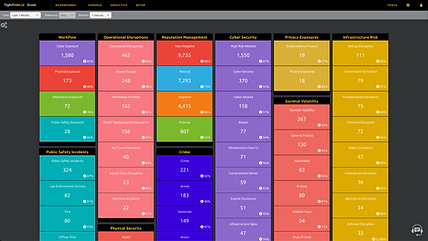
Physical Risk Taxonomy for Physical Security Intelligence
Physical Security Taxonomy for protecting assets, personnel, and infrastructure. Understand critical physical threats, strategic response measures, and best practices in the complex landscape of physical security.
Overview of Physical Security Intelligence
Physical Security Intelligence involves the collection, analysis, and dissemination of information related to threats and vulnerabilities affecting physical assets, personnel, and infrastructure. This discipline is crucial for protecting organizations from tangible risks such as theft, vandalism, terrorism, and natural disasters.
Components of Physical Security Intelligence
Threat Assessment
Threat assessment focuses on identifying and analyzing potential physical threats, including criminal activities, terrorist plots, and environmental hazards.
Vulnerability Analysis
Vulnerability analysis involves the identification and assessment of weaknesses in physical security measures, infrastructure, and protocols that could be exploited by threat actors.
Risk Mitigation Strategies
This component develops and implements strategies to reduce identified risks, including security protocols, personnel training, and infrastructure enhancements.
Importance of Physical Security Intelligence
Physical Security Intelligence is vital because it:
1. Protects People, Assets, and Information
Physical security intelligence helps safeguard:
Employees and visitors
Physical infrastructure and facilities
Sensitive documents and equipment
Valuable inventory and assets
2. Enables Proactive Risk Mitigation
By providing early warning of potential threats, physical security intelligence allows organizations to:
Implement preventive measures
Strengthen vulnerable areas before they can be exploited
Adjust security strategies based on emerging threats
3. Enhances Overall Organizational Resilience
Physical security intelligence contributes to organizational resilience by:
Informing security investments
Guiding the development of emergency response plans
Supporting continuous improvement of security practices
4. Supports Regulatory Compliance
Physical security intelligence helps organizations:
Meet industry-specific security requirements
Demonstrate due diligence in protecting assets and people
Prepare for and respond to security audits effectively
5. Ensures Business Continuity
By helping prevent and mitigate physical security incidents, this intelligence supports:
Uninterrupted business operations
Protection of brand reputation
Maintenance of stakeholder trust
Sample Physical Security Event Types/Descriptions
1. Site Intrusion
Incidents involving unauthorized access to physical premises, potentially leading to:
Theft of assets or sensitive information
Vandalism or property damage
Threats to personnel safety
2. Bomb Threat
Situations where a threat of an explosive device is made, requiring:
Immediate evacuation procedures
Law enforcement intervention
Thorough sweep and assessment of the premises
3. Physical Attack
Instances of violence or assault against individuals, including:
Workplace violence incidents
Targeted attacks on key personnel
Mass casualty events
4. Assassination Attempt
Targeted attacks or attempts on the lives of high-profile individuals, necessitating:
Enhanced personal protection measures
Threat assessment and surveillance
Coordination with law enforcement agencies
5. Structural Failure
Incidents involving the collapse or compromise of buildings or infrastructure, leading to:
Immediate danger to occupants
Potential loss of assets or critical equipment
Disruption of business operations
Sample Physical Security Article Titles
"Breaking: Armed Intruder Breaches Corporate Headquarters in Downtown Financial District"
"Massive Explosion at Chemical Plant Prompts Evacuation of Surrounding Areas"
"Terror Alert: Credible Threat Targeting Major Shopping Centers Nationwide"
"Category 5 Hurricane Approaching: Coastal Businesses Urged to Implement Emergency Protocols"
"Breaking News: Hostage Situation Unfolds at Tech Giant's Research Facility"
Sample Courses of Physical Security Action/Recommendations
1. Immediate Emergency Response
Activate emergency response protocols
Establish an incident command center
Coordinate with local law enforcement and first responders
2. Rapid Evacuation and Lockdown
Implement immediate evacuation procedures for affected areas
Initiate lockdown protocols for secure areas if necessary
Account for all personnel and visitors
3. Enhanced Security Measures
Increase security personnel presence at all locations
Implement stricter access controls and screening procedures
Conduct thorough sweeps of facilities for potential threats
4. Crisis Communication
Initiate crisis communication plans
Keep employees, stakeholders, and the public informed
Coordinate with media relations team for external communications
5. Post-Incident Assessment and Mitigation
Conduct a rapid vulnerability assessment of affected and similar facilities
Implement additional security measures to prevent copycat incidents
Review and update security protocols based on incident learnings